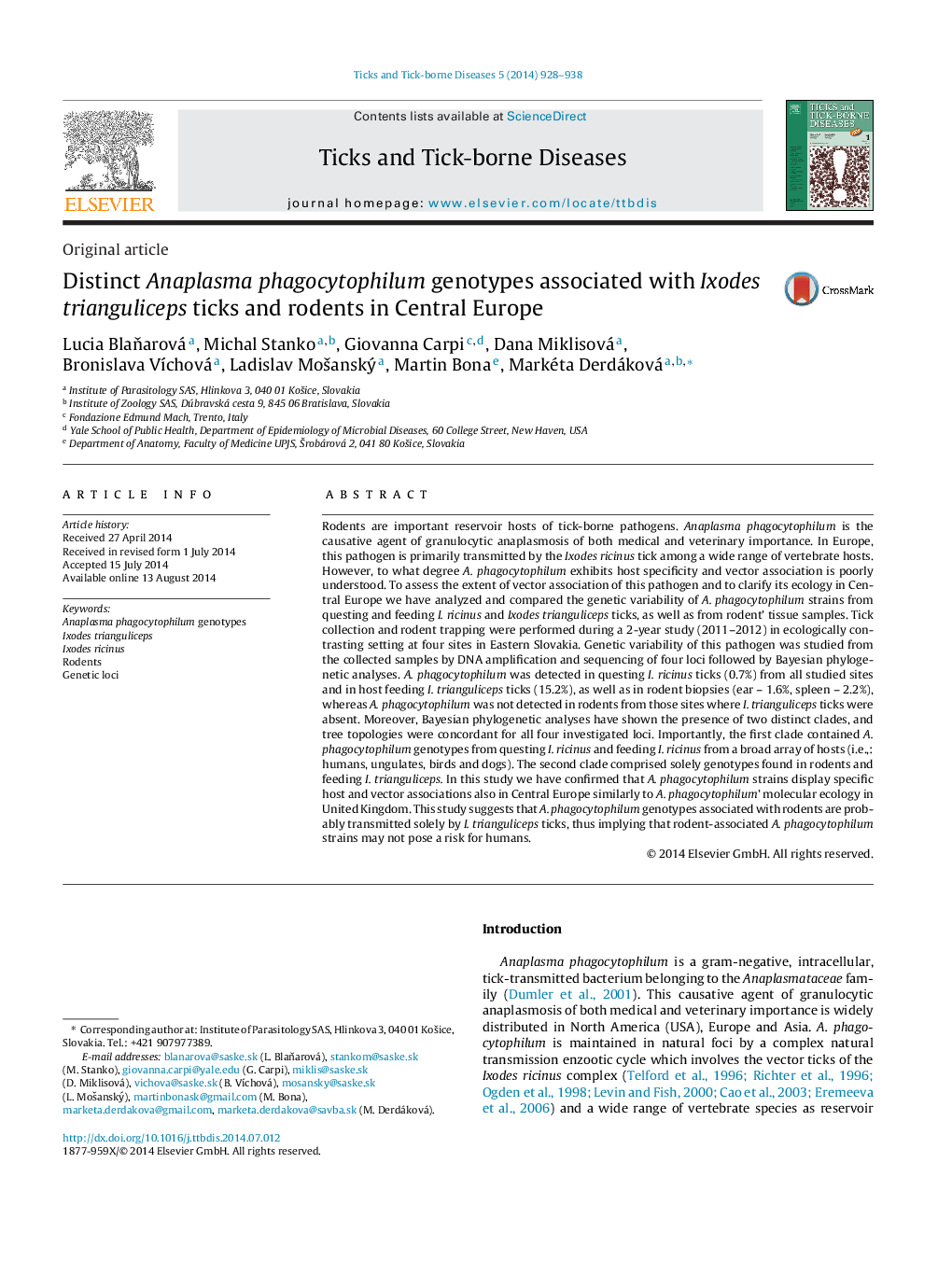| Article ID | Journal | Published Year | Pages | File Type |
|---|---|---|---|---|
| 2474008 | Ticks and Tick-borne Diseases | 2014 | 11 Pages |
Rodents are important reservoir hosts of tick-borne pathogens. Anaplasma phagocytophilum is the causative agent of granulocytic anaplasmosis of both medical and veterinary importance. In Europe, this pathogen is primarily transmitted by the Ixodes ricinus tick among a wide range of vertebrate hosts. However, to what degree A. phagocytophilum exhibits host specificity and vector association is poorly understood. To assess the extent of vector association of this pathogen and to clarify its ecology in Central Europe we have analyzed and compared the genetic variability of A. phagocytophilum strains from questing and feeding I. ricinus and Ixodes trianguliceps ticks, as well as from rodent’ tissue samples. Tick collection and rodent trapping were performed during a 2-year study (2011–2012) in ecologically contrasting setting at four sites in Eastern Slovakia. Genetic variability of this pathogen was studied from the collected samples by DNA amplification and sequencing of four loci followed by Bayesian phylogenetic analyses. A. phagocytophilum was detected in questing I. ricinus ticks (0.7%) from all studied sites and in host feeding I. trianguliceps ticks (15.2%), as well as in rodent biopsies (ear – 1.6%, spleen – 2.2%), whereas A. phagocytophilum was not detected in rodents from those sites where I. trianguliceps ticks were absent. Moreover, Bayesian phylogenetic analyses have shown the presence of two distinct clades, and tree topologies were concordant for all four investigated loci. Importantly, the first clade contained A. phagocytophilum genotypes from questing I. ricinus and feeding I. ricinus from a broad array of hosts (i.e.,: humans, ungulates, birds and dogs). The second clade comprised solely genotypes found in rodents and feeding I. trianguliceps. In this study we have confirmed that A. phagocytophilum strains display specific host and vector associations also in Central Europe similarly to A. phagocytophilum’ molecular ecology in United Kingdom. This study suggests that A. phagocytophilum genotypes associated with rodents are probably transmitted solely by I. trianguliceps ticks, thus implying that rodent-associated A. phagocytophilum strains may not pose a risk for humans.
